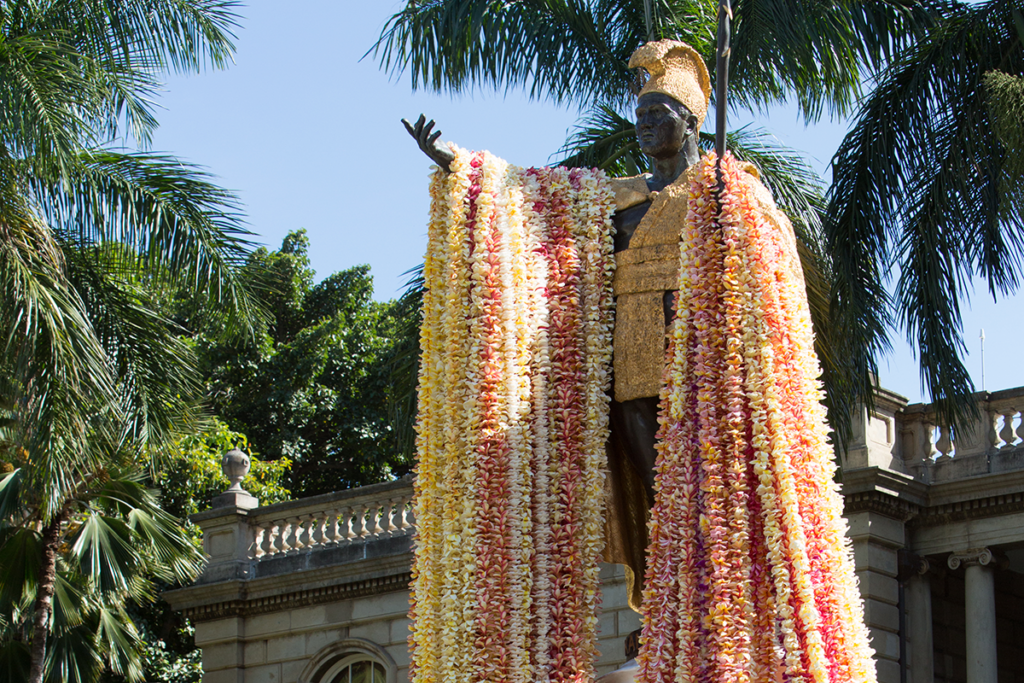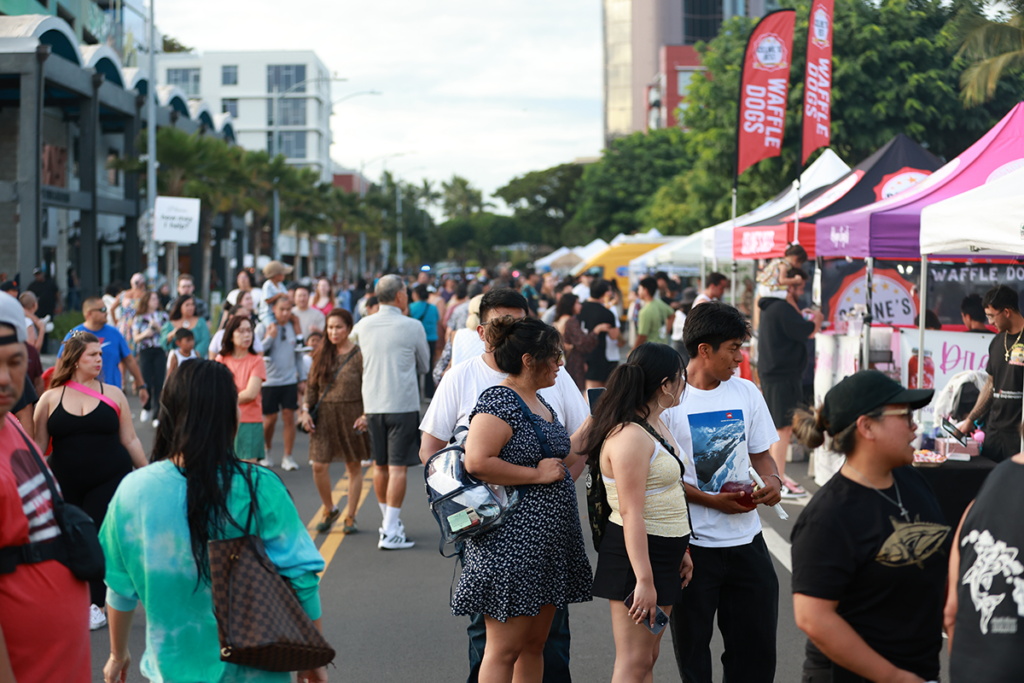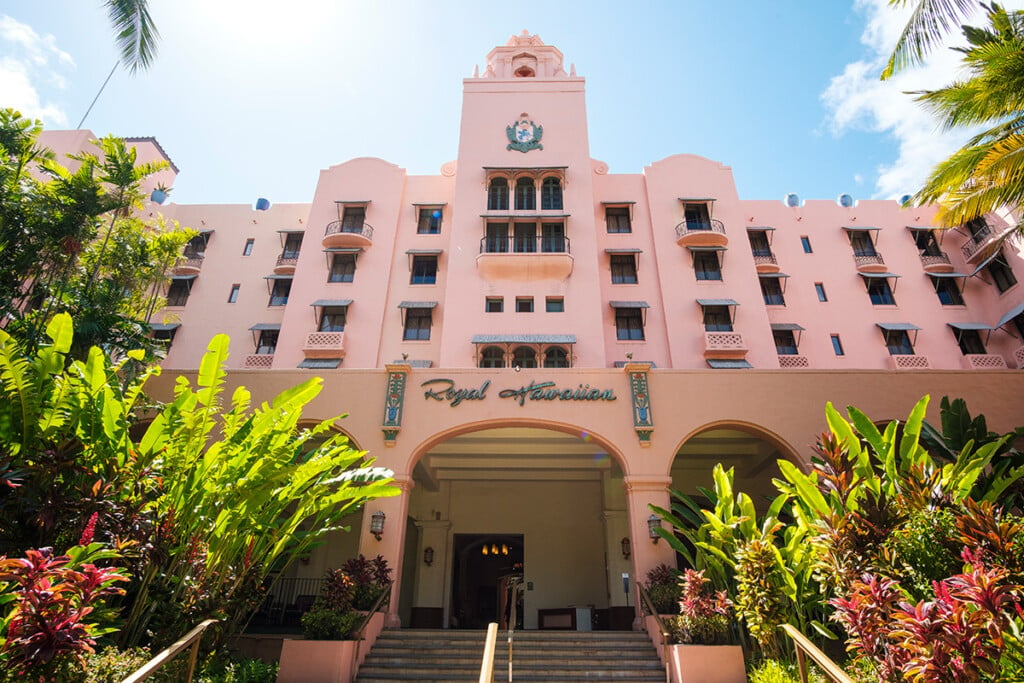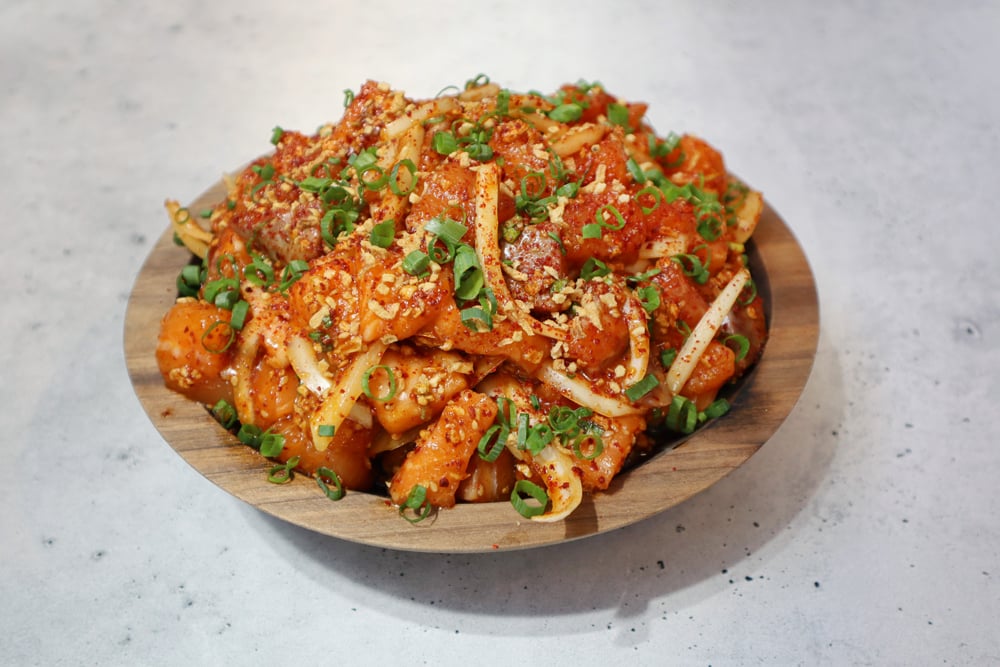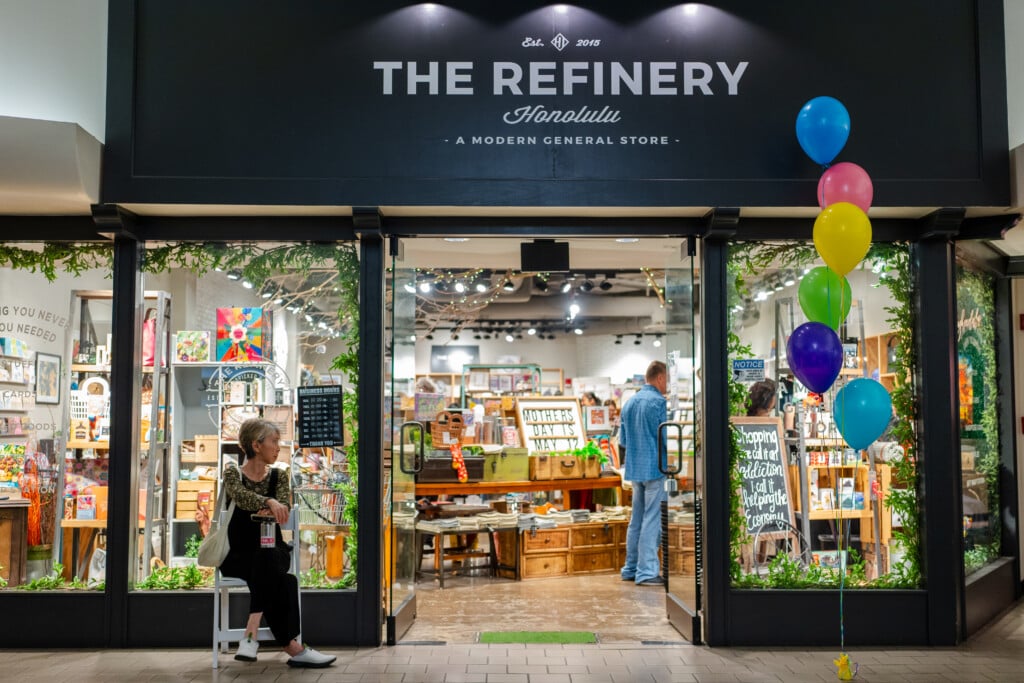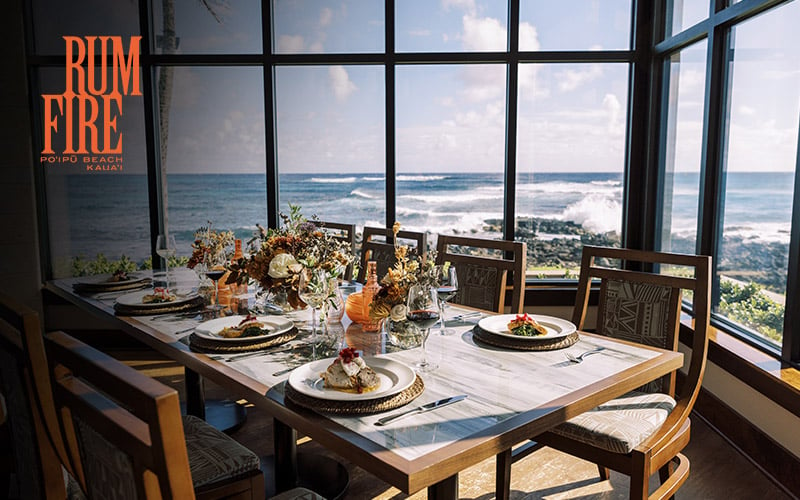New Beginnings: Restoring Old Buildings With Cultural Significance
Architect Dean Sakamoto spearheads the adaptive reuse of notable buildings to honor Honolulu’s social past.
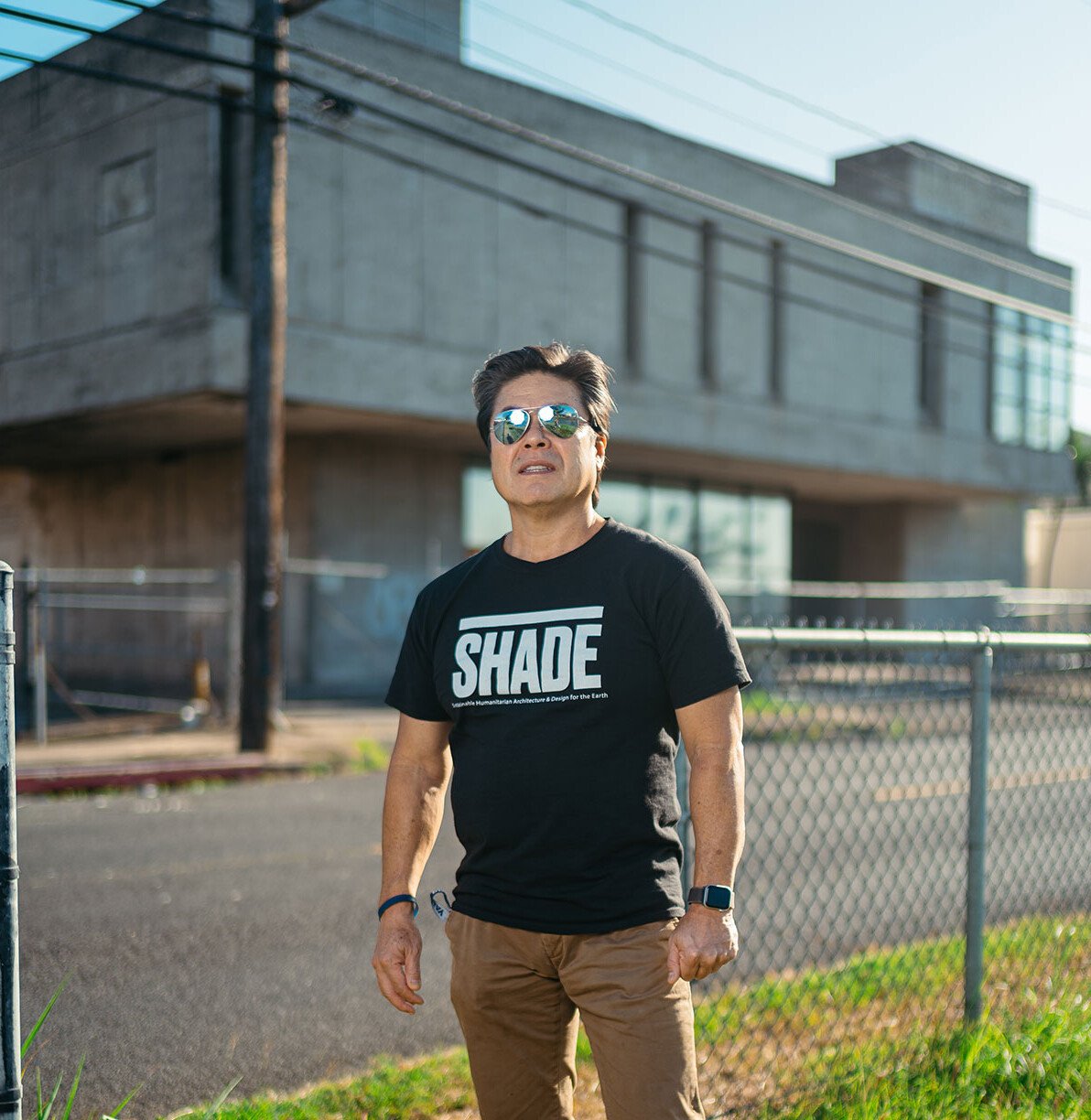
Dean Sakamoto at the Hawai‘i Hochi building, Photo: Aaron K. Yoshino
Honolulu architect Dean Sakamoto has been on a quiet, yet determined, quest to preserve Hawai‘i’s past by finding new uses for notable buildings. As a creative problem solver with a commitment to sustainability, he says it’s his civic duty to prevent the loss of valuable resources.
A current focus is helping to reenvision the dilapidated Hawai‘i Hochi building in Kapālama, with Kamehameha Schools and the city preparing for its extreme makeover as a workforce housing hub on a revitalized industrial footprint. Built in 1972 for the Japanese newspaper Hawai‘i Hochi, and designed by Pritzker Prize-winning architect Kenzo Tange, the raw concrete structure is a testament to the social significance of the newspaper, which was born out of the milestone 1902 strike by exploited Japanese plantation workers.
Last fall, Sakamoto and Canadian architect Brigitte Shim co-led an advanced studio workshop at Yale’s School of Architecture (Sakamoto’s alma mater; he was also director of its Architecture Gallery). With Kamehameha Schools’ support, the duo centered the workshop on the Hochi Building, asking their students at Yale to complete two projects—one proposing adaptive reuse of the building, and the other integrating the building into a new urban ensemble of workforce housing, public space and public programs.
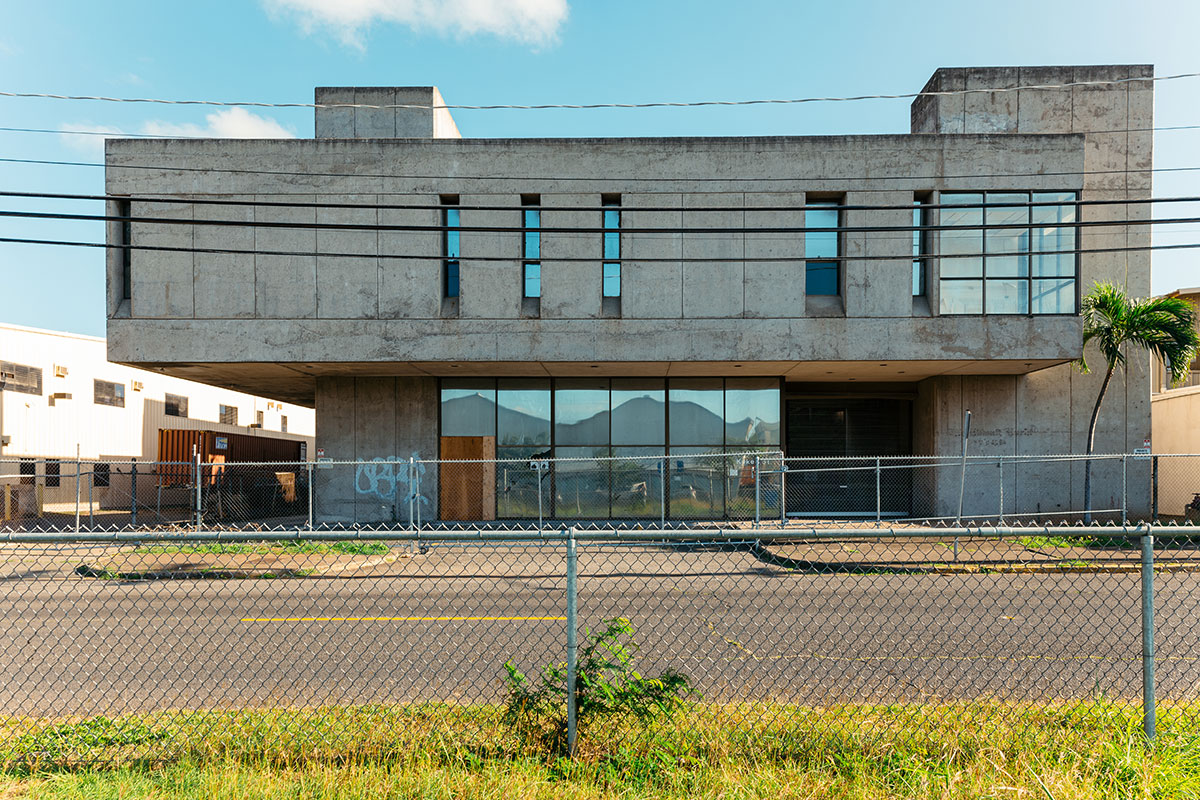
The exterior of the Hawai‘i Hochi Building, Photo: Aaron K. Yoshino
Hilarie Alomar, Kamehameha Schools’ director of planning and development, attended the studio workshop last December and saw the students’ innovative ideas. Sakamoto hopes it leads to a new life for the Hochi building as part of the envisioned Kapālama Kai redevelopment.
SEE ALSO: The History of Hawai‘i From Our Files: The Restoration of ‘Iolani Palace
“I believe in service learning,” he says. “The studio was an opportunity for Yale to lend brainpower to Hawai‘i. … It’s a healthy and necessary thing to do.”
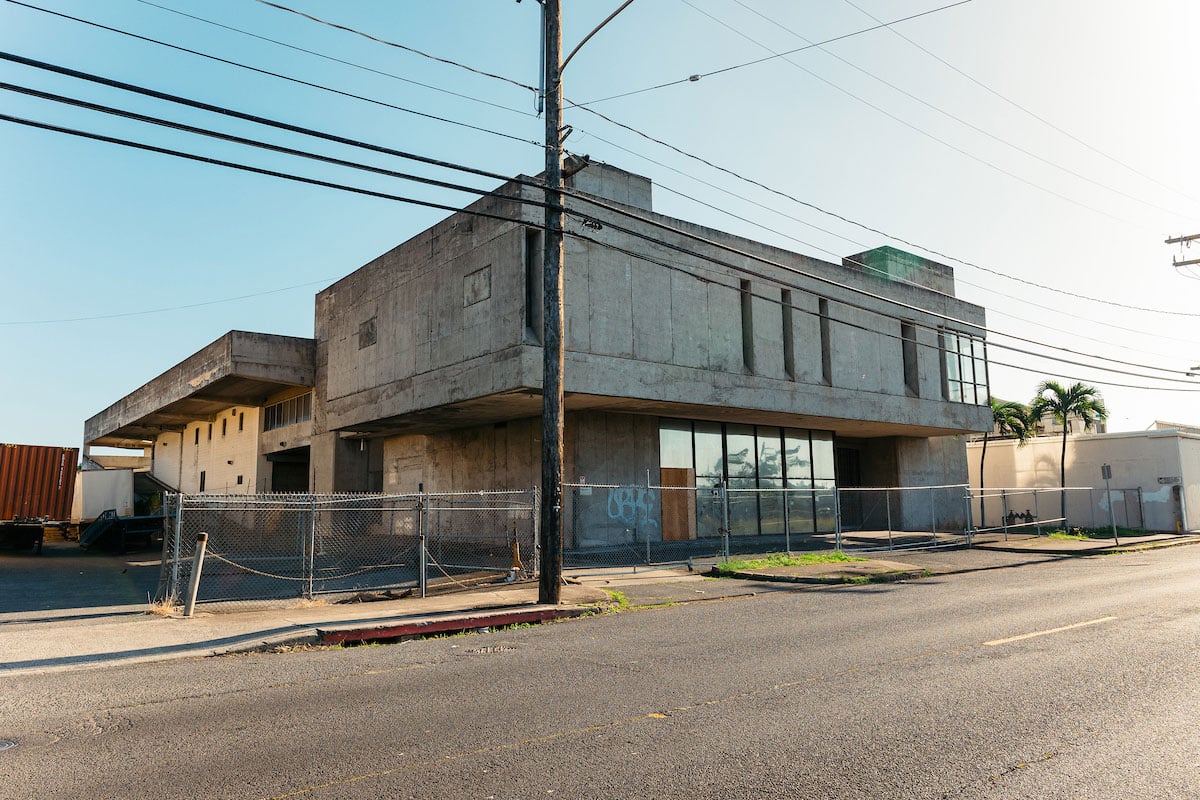
The exterior of the Hawai‘i Hochi Building, Photo: Aaron K. Yoshino
You could say Sakamoto jump-started advocacy for Honolulu’s midcentury modern buildings—he conceived and curated the 2008 milestone Honolulu Museum of Art exhibition Hawaiian Modern: The Architecture of Vladimir Ossipoff, which refocused light on the influential Russian and his design principles such as the living lānai. Shortly after, the city’s preservation community rallied to get The Howard Hughes Corp. to repurpose the iconic Ossipoff-designed IBM Building as its sales center, instead of razing the landmark structure as planned. Sakamoto also co-founded the Hawai‘i chapter of Docomomo, a midcentury modern advocacy nonprofit.
And he spearheaded an investor hui that last year purchased another Ossipoff creation—the 1953 Liberty Bank building in Chinatown. The move “came out of my need to find an office space,” Sakamoto explains. The stars aligned when it turned out that Allen Kubota, the head of commercial real estate at American Savings Bank, which owns the building, remembered Sakamoto from his research for the Ossipoff exhibition. “He appreciated my appreciation—ASB did a lot to maintain the building,” Sakamoto says. “When I approached him about buying the building with my business partner, he thought it was a good idea. The bank allowed me to rent space there while working on financing. We’re trying to determine how best to repurpose the property with knowledge of its cultural significance.”
SEE ALSO: The Liljestrand House: Honolulu’s Mid-Century Architectural Gem
As with the Hochi building, Sakamoto is attracted to the Liberty Bank building’s social history. The bank was founded in 1922 by Chinese businessmen to help Asians, who couldn’t secure loans from white-owned banks. (It was acquired by Bank of America, which then sold its Hawai‘i holdings to American Savings Bank.) In the same neighborhood, Sakamoto is also a consultant on the project to reimagine the 1938 Wo Fat building as a boutique hotel.
“It would be negligent on my part as a professional not to call attention to opportunities like this, avoiding the loss of historic resources,” he says. “It’s the most sustainable thing to do and has cultural value. Why throw away a sturdy chair when it still works?”


